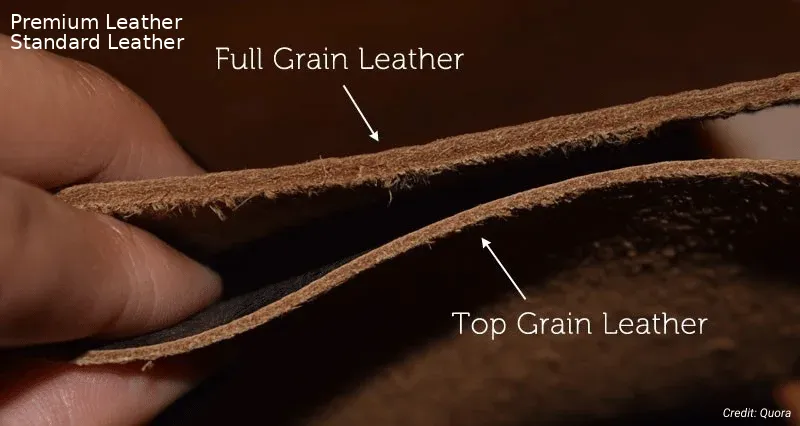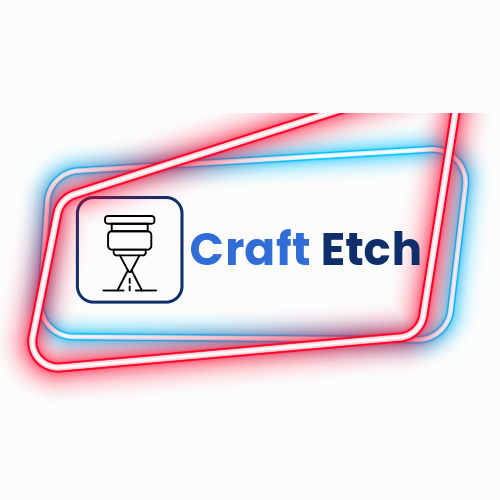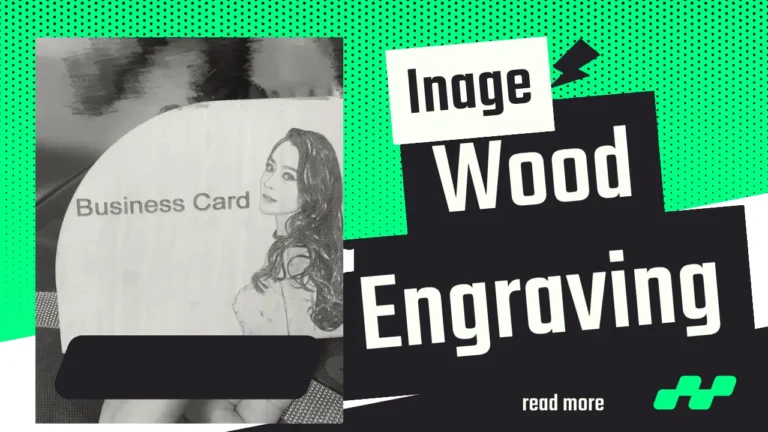Join Workshops
Physical Address
304 North Cardinal St.
Dorchester Center, MA 02124
How Many Types of Leather Are There to Engrave?
When you’re considering leather engraving, the vast array of leather types can be overwhelming.
Understanding the properties, pros, and cons of different types of leather is crucial to achieve the best engraving results.
This article will provide a comprehensive guide on the various types of leather suitable for engraving, helping you make an informed decision for your projects.
Key Takeaways:
- Different types of leather have unique properties that affect engraving quality.
- Knowing the pros and cons of each type helps in selecting the best leather for specific projects.
- This guide covers commonly used leathers: full-grain, top-grain, genuine, bonded, suede, nubuck, and exotic leather.
What Types of Leather Are Suitable for Engraving?
There are different types of leather such as full grain, top grain, genuine leather, and bonded leather. Each type of leather comes with its pros and cons.

Full-Grain Leather
Full-grain leather is the highest quality leather available. It retains the natural grain and imperfections of the hide, which can add character to the engraved product.
- Properties: Durable, ages well, and develops a rich patina over time.
- Pros: Long-lasting, unique appearance with natural markings.
- Cons: Expensive, can be tough to engrave due to its dense structure.
- Laser Engraving Aspect: Requires higher engraving power and slower engraving speed due to its density. Provides precise, deep engravings. Using air assist can help reduce charring.
Top-Grain Leather
Top-grain leather is a step below full-grain. It has the outer layer sanded off to remove imperfections, making it smoother and more flexible.
- Properties: Smooth surface, more flexible than full-grain.
- Pros: Easier to work with, more uniform appearance.
- Cons: Less durable than full-grain, can still be pricey.
- Laser Engraving Aspect: Easier to engrave with lower power and faster speed. Produces clear, detailed engravings. Minimal charring with proper air assist.

Genuine Leather
Genuine leather is made from the layers of the hide that remain after the top is split off for higher-quality leathers. It is more affordable but also less durable.
- Properties: Moderately durable, versatile.
- Pros: Affordable, readily available.
- Cons: Less durable, prone to wear and tear.
- Laser Engraving Aspect: Suitable for moderate engraving depth. May require more frequent adjustments in engraving power. Results are less consistent compared to full-grain or top-grain.
Bonded Leather
Bonded leather is made from leftover scraps and fibers bonded together with polyurethane or latex onto a fiber sheet. It is the lowest quality but also the most economical.
- Properties: Made from leather scraps, often has a synthetic finish.
- Pros: Very affordable, can mimic higher-quality leathers.
- Cons: Not durable, can deteriorate quickly.
- Laser Engraving Aspect: Engravings may not be as precise due to the synthetic materials. Lower engraving power is recommended to avoid burning.
Are Suede and Nubuck Good for Engraving?
Both suede and nubuck leather are good for engraving. suede leather requires lower engraving power and engraving may appear less defined. In comparison, the nubuck leather offers finer engraving details.
Suede
Suede is made from the underside of the animal hide, giving it a soft, napped finish. It requires delicate handling when engraving.
- Properties: Soft, textured surface.
- Pros: Unique look and feel, less expensive than full-grain and top-grain.
- Cons: Less durable, can be challenging to engrave due to its texture.
- Laser Engraving Aspect: Requires lower engraving power to prevent damage. Engravings may be less defined. Air assist can help maintain the texture.
Nubuck
Nubuck is similar to suede but made from the outer side of the hide, which is sanded or buffed to give it a velvety feel.
- Properties: Velvety surface, durable.
- Pros: Soft, luxurious feel, more durable than suede.
- Cons: Prone to staining and requires special care.
- Laser Engraving Aspect: Produces finer details than suede. Requires careful power settings to avoid damaging the surface.
Can Exotic Leathers Be Engraved?
Exotic leathers, such as those from alligators, snakes, and ostriches, offer unique patterns and textures. They can be more challenging to work with but produce stunning results.
- Properties: Unique textures and patterns.
- Pros: Distinctive appearance, high-end feel.
- Cons: Very expensive, requires specialized knowledge to engrave properly.
- Laser Engraving Aspect: Demands precise power and speed settings to preserve the texture. Often used for high-end products, allowing businesses to charge premium prices.
For a better engraving experience, seal the engraved leather properly.
Business Prospects for Laser Leather Engraving
Different types of leather generate varied engraving results, impacting the final product quality and pricing. Full-grain and top-grain leathers create the most vibrant engravings, allowing businesses to charge higher prices. Suede and nubuck offer unique textures, appealing to niche markets. Exotic leathers cater to luxury segments, commanding premium prices.
Sourcing and Selling Strategy:
Laser business owners can source leather patches or products at lower costs from wholesalers or directly from tanneries. Engraving these materials enhances their value, allowing for better profit margins. Offering custom engravings on wallets, belts, and other leather goods can attract a wide range of customers.
FAQs
These are some common questions you may ask:
What type of leather is best for laser engraving?
Full-grain and top-grain leathers are best due to their durability and the high-quality, detailed engravings they produce.
How do you prevent leather from burning during engraving?
Using air assist helps reduce charring and burning. Adjusting the laser power and speed settings is crucial to achieve clean engravings.
Can all types of leather be laser engraved?
Most leathers can be laser engraved, but the quality and detail of the engraving can vary depending on the type of leather and its properties.
How do you clean leather after engraving?
Gently wipe the engraved area with a damp cloth. Avoid harsh chemicals that can damage the leather. Here’s our cleaning guide.
Is it profitable to start a laser leather engraving business?
Yes, with the right sourcing strategy and targeting niche markets, laser leather engraving can be a profitable business.
Selecting the right type of leather for engraving depends on your specific needs and the nature of your project.
Full-grain and top-grain leathers are ideal for high-quality, durable products, while genuine and bonded leathers offer more budget-friendly options. Suede and nubuck provide unique textures but need careful handling.
Exotic leathers, though pricey, can create extraordinary engraved items. Understanding these differences ensures that you choose the best leather for your engraving projects, resulting in beautiful and lasting creations.



